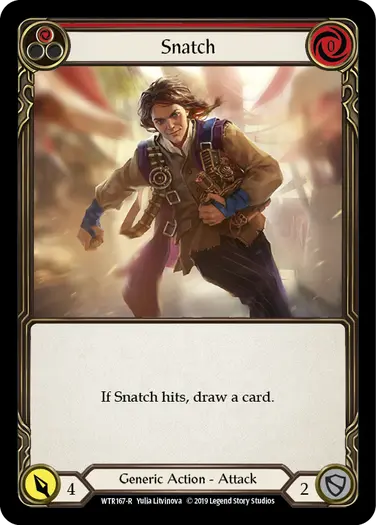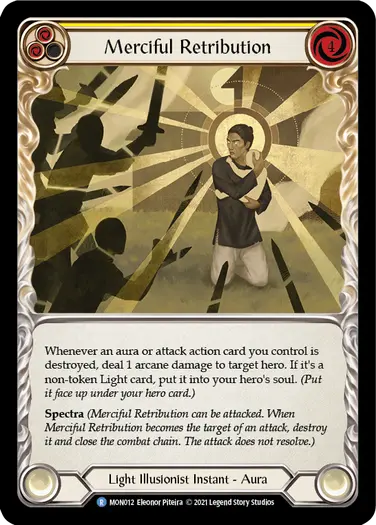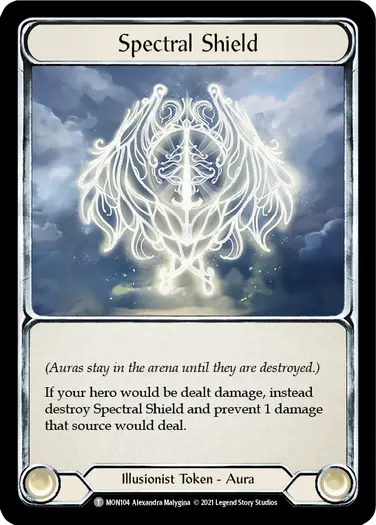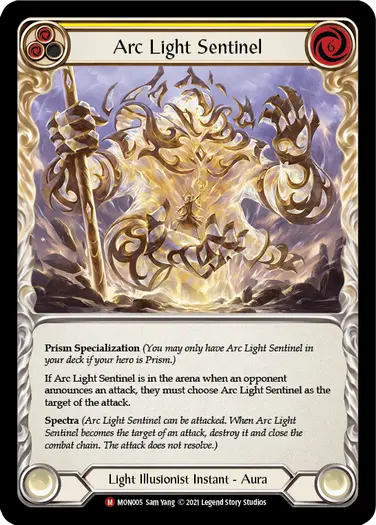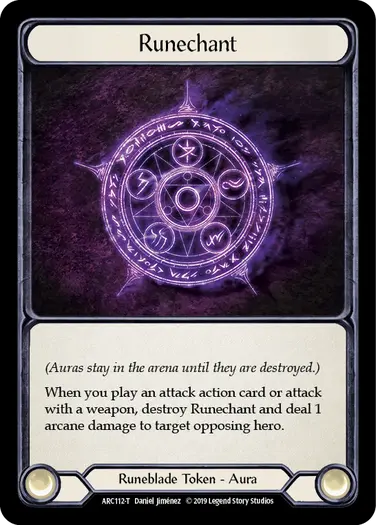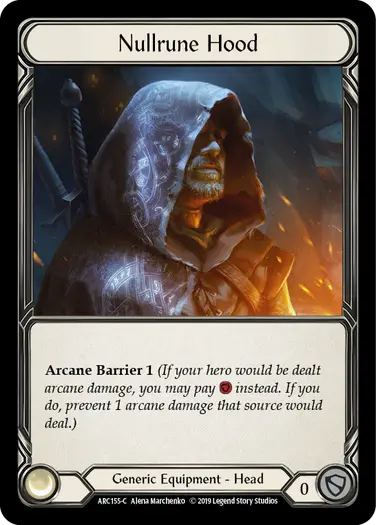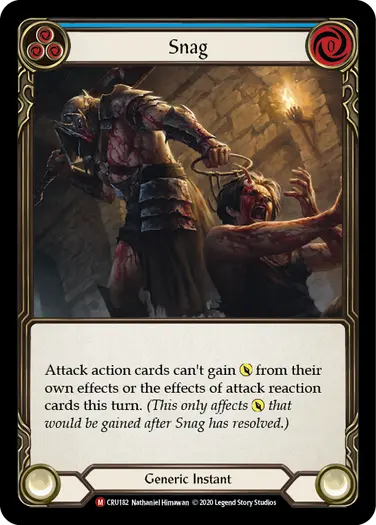With Road to Nationals season right around the corner, it’s the perfect time to brush up on a few common confusing questions for crystal clear clarification in the arena! The combat chain, chain links and priority are right at the top of the list when it comes to commonly discussed rules queries and confusions. Today Legend Story Studios’ Rules and Policy Manager, Josh Scott is here to provide definitive answers to some of these most frequently asked questions.
Please note that some questions in this Rules Reprise article might be outdated.
Always check the Comprehensive Rules, and Tournament Rules and Policy, for the most up-to-date rulings.
How does timing work between damage calculation and chain link resolution? Particularly the interaction between Merciful Retribution and Spectral Shield when an attack is threatening to deal lethal damage.
The player that attacked would win.
Here’s an example: Both Tyler and Perry are on 1 life. Perry controls Merciful Retribution and 1 Spectral Shield token. Tyler plays Snatch (red), Perry does not defend. During damage calculation, Spectral Shield prevents 1 damage, and Perry takes 3 damage and loses the game.
If Perry were able to find a way to live, then during the chain link resolution step the Merciful Retribution triggered effect would be put onto the chain. When the triggered effect layer is resolved, if Tyler did not prevent any arcane damage then Tyler would take 1 arcane damage and lose the game.
How does passing priority for the active player interact with available action points?
The turn player can continue to play or activate cards or abilities, and can play or activate additional action cards or abilities when the chain is empty.
Tyler has 1 action point, and passes priority on an empty chain. Perry plays Prismatic Shield at instant speed (layer 1) and passes priority. Tyler may now play or activate instant cards or abilities if they want, but they instead pass priority. Layer 1 resolves, and Tyler regains priority. Tyler may now play action cards or abilities because they have priority, the chain is empty, and they have an action point.
How does priority work in the reaction step of combat?
Reaction step functions exactly the same as any other time players have priority. When the attacking hero has priority they may play instants and attack reactions, when the defending hero has priority, they may play or activate instants and defense reactions. It is worth noting that during the attack, defend and chain link resolution steps of combat, players can only play instants (not reactions).
Priority follows three simple rules:
- The active player (the player who has priority) can play or activate cards or abilities (which are put as the top layer of the chain) until they pass priority to the next player.
- When all players pass priority without playing or activating any cards or abilities, the top layer of the chain resolves.
- When all players pass priority without playing or activating any cards or abilities, and the chain is empty, the phase/step ends.
The same principles apply to combat, such as during the reaction step, but instead of an empty chain you are passing on layer 1 (the attack) of the chain link, which is functionally identical.
When can a player concede?
A player can concede before they present their deck, or after they present your deck for circumstances such as:
- There is an emergency that requires the attention of the player
- A player doesn't feel well
- A player feels uncomfortable playing against the opponent
- A player spills a cup of coffee over themselves and their belongings (only) and they want to concede in order to clean themselves up
- A player has no cards left in their hand or deck and therefore has no way to win the game
The judge should be called to oversee the concession, and the Head Judge or Tournament Organizer decides whether the player should be dropped from the tournament.
How does Spectra interact with ‘mixed damage’ attacks?
Effects such as those on Vexing Malice and Arcanic Crackle resolve when the card or ability resolves as an attack during the attack step of combat. Spectra is a triggered effect that triggers when the attack is played or activated (targeting the card with Spectra) and resolves before the attack resolves. This means those effects that would resolve when the attack resolves would not come into play.
Perry controls Arc Light Sentinel. Tyler plays Vexing Malice (layer 1) targeting Arc Light Sentinel. Spectra triggers (layer 2). Both players pass and layer 2 (Spectra) resolves, closing the combat chain. Vexing Malice does not resolve and goes straight to the graveyard.
How do multiple sources of Arcane Damage interact with Arcane Barrier?
Arcane Barrier X prevents X arcane damage per source. A source is currently vaguely defined as a layer on the chain. When a Runechant token triggers, it puts a triggered effect layer on the chain. Multiple Runechant tokens would produce multiple layers, and each layer would be a separate source of 1 arcane damage. It is a similar situation with Seeds of Agony. Seeds of Agony has an errata to make it a triggered effect. When 3 Seeds of Agony have been played and an attack is made that triggers them, each Seeds of Agony effect creates a separate layer on the chain that would deal 1 arcane damage, for a total of 3 layers.
Tyler controls 3 Runechant Tokens. Tyler plays an attack action card (layer 1) targeting Perry. All three Runechants trigger (layers 2, 3, 4). Both players pass priority, layer 4 resolves and Perry takes 1 arcane damage. Both players pass priority again, layer 3 resolves and Perry takes 1 arcane damage and so on. As each layer is a single source of arcane damage, Perry would only need a single effect of Arcane Barrier 1 to prevent the damage of each layer by spending resources.
How does Snag work? When do you need to play and what does it affect?
When Snag resolves, it generates a continuous effect. The effect prevents any future attack action card effects that would grant power to themselves. The effect also prevents any future attack reaction card effects that would give an attack action card power. The important thing to note here is that this continuous effect comes into play when the Snag layer resolves, and any layer that resolves after Snag will be subject to the continuous effect.
Snag is an instant and can be played whenever you have priority (meaning before any layer resolves on the chain or chain link). Here are two examples:
Tyler plays and resolves 3 non-attack action cards. Tyler plays Rift Bind (layer 1) targeting Perry. Rift Bind currently has not resolved and thus its effect that gives itself +X power has not been resolved yet. Perry plays Snag (layer 2). Both players pass priority and Snag resolves. Both players pass priority again and Rift Bind (layer 1) resolves. Because Snag is in effect, Rift Bind does not gain +X power from its own effect.
Tyler plays Snatch (red) (layer 1). During the reaction step, Tyler plays Razor Reflex (blue) (layer 2) and passes priority. Perry plays Snag (layer 3) and passes priority. Tyler Plays Razor Reflex (yellow) (layer 4). Both players let all the layers resolve. First, layer 4 resolves, because Snag is not in effect, the Snatch will gain 2 power from the Razor Reflex (yellow) effect. Second, layer 3 resolves, and Snag’s continuous effect is now in play. Third, layer 2 resolves, but because Snag’s effect is now in play the Snatch does not gain any power from the second Razor Reflex (blue) effect. The first Razor Reflex (yellow) is in effect and Snatch has +2 power. Finally Tyler plays and resolves another Razor Reflex (red) (layer 2). Layer 2 resolves, but because Snag’s effect is still in play the Snatch does not gain any power from the third Razor Reflex (red) effect.
In short, it matters when Snag and other effects resolve, not strictly when they are played.
Hopefully this brief rules revision comes in handy in your upcoming battles on your Road to Nationals journey. We'll be back next week with more quick questions (and answers) from Josh.
